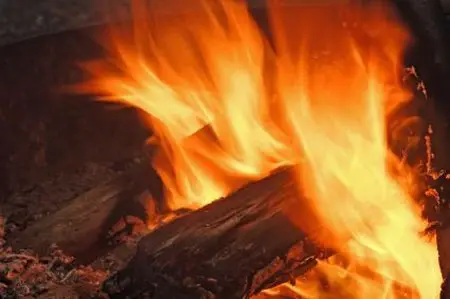It sounds like a question asked at the dawn of the Stone Age. Most grade school kids have surely made an experiment along these lines in Science class—if not in your own backyard ( while you were not looking). And they came by the answers just as when smoke started forming. The moral of the story is: Keep matchsticks out of reach of misguided children.
All living things burn, but dried wood burns easily
Table of Contents
Living things are made from organic matter which means they’re made of oxygen, carbon, and hydrogen. It’s oxygen that causes living things to burn. Wood easily burns because it contains very little water, especially if it’s sun-dried. So it easily catches fire as its carbon and hydrogen component burns. Still, not all woods are prone to catching fire easily.

Wood Why Does Wood Burn
What happens is, in general terms, wood easily oxidizes but doesn’t catch fire unless it reaches its so-called flashpoint. By then wood releases gas where there is an interface between the flame and the surface—the part that appears on fire but in fact, doesn’t. The gap is where oxidation-reduction happens in which fire supports itself up to 900 degrees F.
Parts of wood
The parts of the wood that catch fire are the organic compounds found in large deposits in its sap and bark. The tree’s sap has deposits of glucose, which is a volatile compound, meaning it’s flammable. Wood has also carbon and ash that resist burning—they are in fact calcium, potassium, and magnesium deposits. The smoke that you see in burning wood or paper is actually a bunch of hydrocarbons that are freed from the surface of the wood. When the heat reaches about 300 degrees F, that’s when they start evaporating. Any higher than that and they’re going to catch fire.
But when you burn charcoal, you don’t see much fire since charcoal is pure carbon. The little fire that burns comes from remaining hydrogen and glucose deposits.
Uses of wood
Wood in its natural state is biodegradable and thus enriches the earth. It keeps the air around it cool, and even if it’s burned it requires less energy than when you use steel. Wood is constantly renewable.
Wood is used to build houses and buildings of shelter, furniture, bridges, fences, and many others. Wood is a lot more pleasing to the eye than metal or concrete, according to many designers.

Uses of fire
Everyone knows fire wasn’t just used by primitive men to keep themselves warm at night. They also used fire in a lot more ways: roasting meat and root crops, lighting their path for hunting, as well as keeping wild animals at bay. With fire, our ancestors were able to mark their places in the vast darkness of forests while hunting in the wilds. In the process they discovered that burning grass in the forest proved good for both the forest and the land—ash served as perfect fertilizer for the ground so new crops, grass, and forest plants grew in their place.
But with climate change on the rise, having a forest fire is the last thing you’d wish.
